Why Does My AC Compressor Shut Off After 2–3 Minutes?
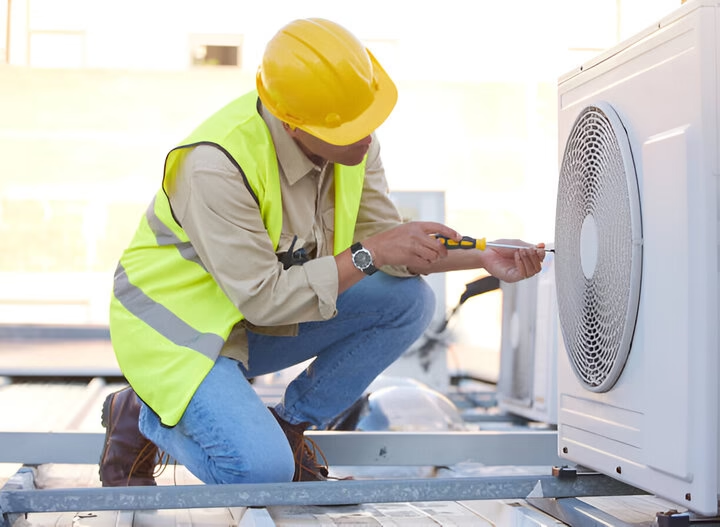
Why Does My AC Compressor Shut Off After 2–3 Minutes? Common Causes and Fixes If you’re asking yourself, “Why Does My AC Compressor Shut Off After 2-3 Minutes?” you’re not alone. It can be hard to understand and deal with this problem, especially when it’s hot outside and you need your air conditioning the most. In this complete guide, we’ll look at the most common reasons for this short cycling behaviour and give you solutions you can use right away. What Is Short Cycling? This is when your air conditioner turns on and off too often, usually not long after it starts up. It’s called a short cycle. Things are less comfortable, and the system works less well and lasts less long because of this. Setting your setting to the Best AC Temperature can help keep the cooling working well all the time and cut down on short cycles. Common Causes Why Your AC Compressor Shuts Off Quickly 1. Thermostat Issues Faulty Thermostat Placement If you put your thermostat too close to a vent or in direct sunlight, it might send the wrong temperature readings, which would make the compressor turn off before it should. Battery or Wiring Problems Signals sent to the compressor may not be reliable if the batteries are low or the wire is broken. Fix: Either move the heater or get new batteries. Ask a person who works on HVAC to look at the wires. 2. Dirty Air Filter When air filters get clogged, they stop air from moving through the system. This makes it warm and shuts down to protect itself. Fix: Every 30 to 60 days, or as the maker says, change the air filter. 3. Low Refrigerant Levels If there isn’t enough refrigerant, the generator could get too hot and shut down. A leak in the coolant is often to blame. Fix: Have a qualified expert look for leaks, fix them, and then charge the system again. 4. Frozen Evaporator Coils If there isn’t enough movement or refrigerant, the evaporator coils can freeze, which stops the motor. Fix: Lock the doors and let the coils thaw out. Then, check the amounts of refrigerant and oxygen. 5. Electrical Problems If there are loose wires, broken switches, or a battery that doesn’t work right, the compressor may turn off after a short time. Fix: If there are any wiring problems, an HVAC professional should look at them and fix them. 6. Compressor Overheating A fan that gets too hot is usually because the airflow isn’t good, it’s being used too much, or the system is old. Also, to keep your AC from burning, make sure the drain lines are clear on a regular basis. Clogged drain lines can cause moisture to build up and put extra stress on the fan motor. Fix: Clean up around the outdoor unit, make sure there is enough air flow, and set up a system check-up. 7. Oversized AC Unit If your air conditioner is too big for your home, it may cool it down too quickly, turning on and off too often. Fix: Talk to a licensed HVAC professional to find out if your unit is the right size. How to Diagnose the Problem Yourself Some problems need to be fixed by a professional, but there are some things that people can do to fix them themselves. Step-by-Step Diagnostic Checklist Check the thermostat – Look for battery, placement, or settings issues. Inspect the air filter – Replace if it looks dirty. Listen for odd noises – Clicking, buzzing, or humming can signal electrical issues. Observe the compressor cycle – Time how long it runs before shutting off. Examine the outdoor unit – Ensure there’s no debris blocking ventilation. When to Call a Professional If the simple steps to fix the problem don’t work it’s time to call an HVAC expert. It’s helpful to know how much it costs to install a mini split air conditioner before making a choice especially if you want to replace your old system with a ductless one. Professionals can: Perform refrigerant pressure tests Inspect electrical components Diagnose hidden leaks Suggest that the system be upgraded or replaced. Preventative Maintenance Tips Regular Maintenance Checklist Replace filters regularly Clean coils every 6 months Schedule seasonal HVAC inspections. Keep vents unblocked Ensure proper thermostat calibration. “Why does my AC compressor shut off after 2-3 minutes?” is a question you might not have to ask again if you take care of your AC now. Conclusion If you’ve ever thought, “Why does my AC compressor turn off after two to three minutes?” The cause could be anything from a dirty air cleaner to a problem with the electricity or a system that is the wrong size. You can save time, money, and pain by quickly finding and solving the problem. Don’t be afraid to get help from a professional if the problem goes beyond simple fixing. Stay tuned to our blog for more HVAC news and care tips. FAQs Does it make sense for my air conditioner to turn off after a while? That’s not right. If the machine turns off every two to three minutes there is usually a problem, like an electrical issue, a broken timer or a problem with the refrigerant. From time to time short cycles can happen. The short turn of my AC fan is caused by what? Some common reasons are: Not enough or leaking coolant Air filters that are dirty or clogged thermometer that doesn’t work Ice on the evaporator coils Capacitor or compressor circuit is broken What if the air filter is dirty? Will that make the blower turn off early? Yes. If the air filter is dirty or jammed, it blocks airflow. This can cause the coils to boil or freeze, which can cause the compressor to turn off too soon. If there isn’t enough gas, will the AC switch off quickly? Of course. Low refrigerant makes the system’s pressures go out of balance, which protects the compressor by
Mini Split AC Installation Cost: What to Expect in 2025
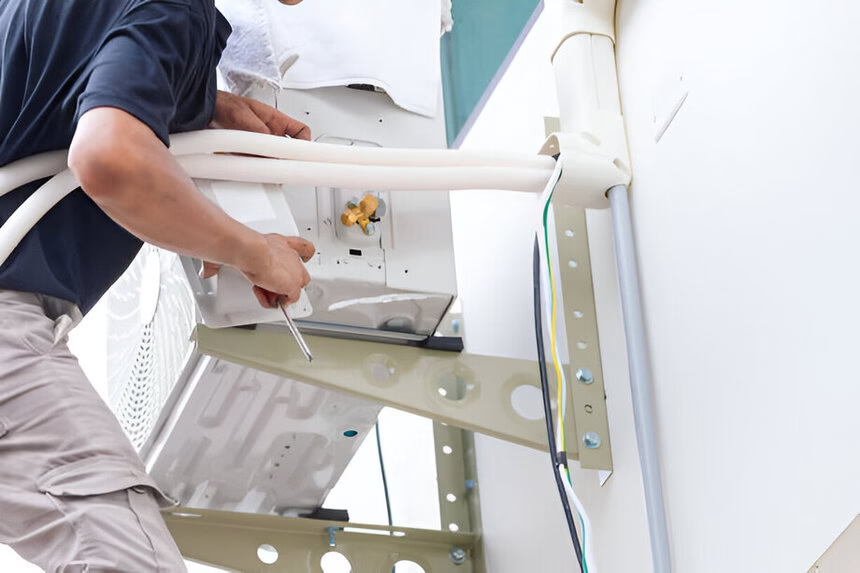
Mini Split AC Installation Cost: What to Expect in 2025 As more people look for ways to cool their homes that use less energy, small split air conditioners have become a popular choice. If you’re thinking about getting a Mini Split AC Installation Cost in 2025, you need to know how much it will cost to install it so you can make an informed choice. This complete guide will show you how much things will cost, what factors will affect those costs, and how to save money while still getting the best comfort. What Is a Mini Split AC System? A mini split air conditioner, which is also called a ductless mini split, has a unit inside that is joined to a motor outside. These systems can effectively cool or heat certain areas or rooms without the need for ducts. Key Features: Energy-efficient operation Zoned temperature control Installation is easier than with central systems Quiet performance When you compare systems, you may also be interested in how much it costs to replace an AC unit completely. It may cost more and take more Work to replace an old central unit than to install a ductless mini split system. Average Mini Split AC Installation Cost in 2025 By 2025, the cost of installing a small split AC will range from $2,500 to $8,000. The exact price will depend on the size and complexity of the system. A single-zone device costs between $4,500 and $6,000 across the country on average. Cost Breakdown: Item Cost Range Mini Split Unit (1 zone) $1,000 – $3,000 Labor & Installation $1,200 – $3,500 Additional Zones $500 – $2,000 per zone Electrical Work (if needed) $300 – $800 Permits & Inspection $100 – $500 Factors Affecting Mini Split Air Conditioner Installation Cost 1. Number of Zones The prices of both tools and staff go up with each extra zone. For a setup with more than one zone, you might need more than one indoor unit and a bigger outdoor fan. 2. Brand and Model Brands like Mitsubishi Electric, Daikin, and Fujitsu are more expensive, but they last longer and work better. 3. Unit Capacity (BTUs) It costs more for bigger units that are made for bigger rooms. BTU needs depend on the size of the room, the quality of the insulation, and the weather. 4. Labor Rates in Your Region Installation costs can change a lot from one area to another because of the demand for workers and the supply of skilled techs. 5. Installation Complexity The total cost will depend on the type of walls, the distance between the indoor and outdoor units, and the need for electricity changes. Installation Cost by Type of Property Property Type Typical Installation Cost Small Apartment $2,000 – $4,000 Single-Family Home $3,500 – $6,500 Multi-Level House $5,000 – $10,000 Commercial Space $6,000 – $15,000+ DIY vs. Professional Installation Even though there are do-it-yourself tools available, it is safer, protects your guarantee, and follows local building rules to have a professional install it. Pros of Hiring a Pro: Correct sizing and placement Reliable links for electricity and coolant Warranty validation Local permit and code compliance Tips to Save on Mini Split AC Installation Get Multiple Quotes: Look at at least three qualified HVAC companies side by side. Check for Rebates: Many utility companies give discounts for HVAC systems that use less energy. Choose the Right Size: Bigger systems cost more and might not work as well. Install Off-Season: Prices might be less in the spring or fall. Bundle Services: Some companies give savings if you hire them to do more than one repair or if you combine it with other HVAC work like window AC installation, which can also improve cooling efficiency for smaller rooms. Energy Efficiency and Long-Term Savings Installing a small split air conditioner may seem expensive at first, but the money you save on energy costs makes it worth it. A lot of them have SEER scores above 20, which means that your monthly energy bills will be lower. Benefits: Reduced energy use Targeted zone control No duct loss (which can waste 20–30% of energy) When looking at cooling choices, knowing how much it costs to replace an AC unit can also help you decide if buying a mini split is a better long-term investment. Final Thoughts Knowing how much it will cost to put a small split AC in 2025 will help you make smart choices. Prices change for many reasons, but knowing what to expect, what affects prices, and how to save can help you find a home cooling solution that is both cheaper and better. If you’re remodeling an old house or building a new one, a ductless mini split is an energy-efficient option that will last for a long time. Frequently Asked Questions How long does it take to install a mini split? Sometimes it takes one to two days, but it depends on how many zones there are and how complicated the method is. Do mini-splits require maintenance? Yes, every 6 to 12 months, normal upkeep includes cleaning the filters, checking the amount of refrigerant, and looking over the connections. Can mini-splits cool multiple rooms? Because it has more than one zone, there is one outdoor fan that each room shares and an inner unit for each room. Are mini-splits worth the investment? Of course. Mini split air conditioners are more expensive to install at first than window units, but they last longer, use less energy, and are more comfortable in the long run. External Reference Energy.gov – Ductless Mini-Split Heat Pumps
How Much to Replace an AC Unit in 2025
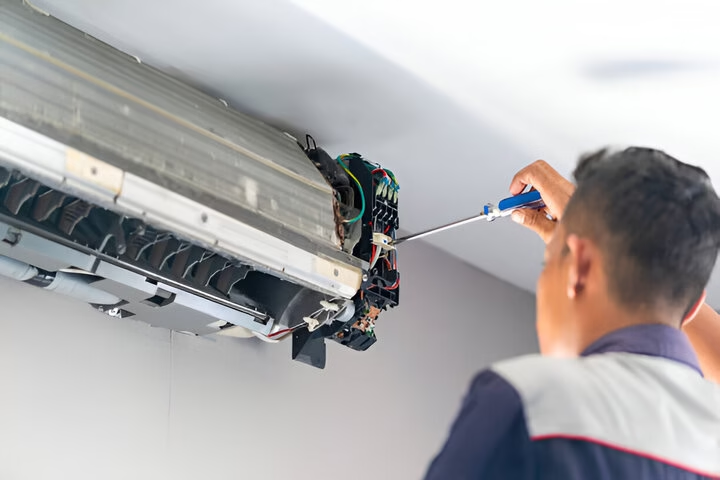
How Much to Replace an AC Unit in 2025 It doesn’t come cheap to get a new air conditioner, but it’s an investment in your home’s comfort and health. In 2025, let’s say you want to get a new air conditioner. Knowing the different prices can help you stick to your budget and make a smart choice, whether you’re upgrading your system or figuring out how to clear out an AC drain line. This guide will break down the main things that affect how much to replace an AC unit, such as the size of the unit, how efficient the system is, and the cost of work. By the end, you’ll know everything there is to know about what to expect and be ready to pick the best choice for your needs. How much does it cost to get a new AC? How is it that the price of a new AC unit in 2025 is different? It usually costs between $3,500 and $7,500. These can cost $10,000 or more if they have smart heaters and high SEER rates, for example. Key Factors Affecting the Cost: Type of unit (e.g., central ductless mini-split or portable) Energy-efficiency rating (measured in SEER and EER ratings) System capacity (measured in tons or BTUs) Costs for labor and installation Upgrades that need to be made, like pipes or permits Next, we’ll talk about the main things that affect how much it costs to replace your AC unit. Rating for Energy Efficiency The Seasonal Energy Efficiency Ratio (SEER) and Energy Efficiency Ratio (EER) of an air conditioner show how well it uses energy. Better energy gains are found in SEER and EER scores that are higher, but they cost more up front. What to Know: The minimum SEER needs for 2025 may be different depending on the rules in your area. Most of the time, systems with a SEER value of 16 to 22 are very efficient. Spending more up front on a system that uses less energy can save you a lot on your power bills over time. For instance, going from a 13 SEER unit to an 18 SEER unit can cut yearly cooling costs by as much as 30%. System Capacity and Sizing Your AC unit should be the right size for the size of your home. If you install a system that is too small or too big, it might not work as well, and your energy bills will go up. General Guidelines: Most houses that are less than 1,000 square feet can handle a 1.5-ton unit. Homes that are between 1,200 and 2,000 square feet need a 2 to 3-ton unit. Bigger homes need 4-5 ton systems. Talk to a professional in HVAC to find out what size is best for your home. They can do a thorough load estimate based on your temperature, insulation, and the home’s plan. New Installation vs. Replacement Units New Installation: Putting in a brand-new cooling system costs more because you need to buy new pipes, wiring, and other equipment. This could make the whole thing cost between $8,000 and $12,000. Replacement Units: Costs will usually be cheaper if you’re updating an old system because important equipment like pipes is already there. Labor Costs The cost of labor can be between 40 and 50 percent of the total cost of an AC unit replacement. Rates depend on where you live, how hard the installation is, and whether you need any other changes. Average Costs: Basic installation (no extras): $1,200–$2,000 $2,500 to $4,000 for a complicated system with new pipes or electricity Hiring skilled workers makes sure that the job is done quickly and safely. If you want to avoid expensive mistakes, always hire an HVAC expert who is licensed and protected. Other Considerations When making a budget for a new AC, you should also think about these other things: Type of Unit The cost depends a lot on the type of air cooling system you pick: Central air conditioning costs more, but it’s the best way to cool big houses equally. Ductless mini-split systems are flexible and use less energy, but they can cost more per unit. For single rooms, portable or window units are good choices that won’t break the bank. Lifespan Most modern units last between 12 and 15 years. If the life of your current unit is almost up, buying a good alternative can save you money in the long run. Ductwork Your new unit may not work as well if the ducts are old or leaky. If fixes are needed, ducts can cost an extra $1,500 to $3,000. Electrical Infrastructure For older homes to be able to handle the power needs of newer AC units, the electrical systems may need to be upgraded. Furnace Compatibility If your heater and air conditioner share a fan, you might need to get new ones for them to work together. Time of Year The price of replacement can change based on demand: Installation rates are often lower in the spring and fall, when demand is smaller. Costs may go up when demand goes up in the summer. Permits and Inspections Permits and checks may be needed because of local building rules and laws. These can add $150 to $500 to the total cost. Conclusion How Much to Replace an AC Unit 2025? The average cost is between $4,500 and $12,000. However, your exact cost will depend on a lot of things, such as the type of unit, its efficiency rate, the work you hire, and where you live. You can make an informed, cost-effective choice for a cooler, more energy-efficient home if you know about these factors and follow smart buying habits. FAQs What is the average lifespan of an AC unit? If you take care of your AC, it should last between 10 and 15 years. Should I get a new AC unit or fix the old one? Most of the time, it’s better to get a new unit than to fix an
How to Unclog AC Drain Line: Easy Step-by-Step Guide
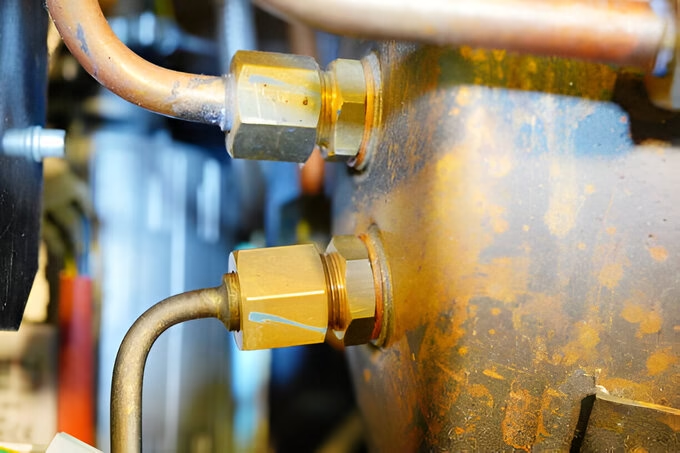
How to Unclog AC Drain Line: Easy Step-by-Step Guide A clogged AC drain line is a common problem in homes that can lead to water damage, less effective cooling, and musty smells. It can save you time, money, and stress to know how to Unclog AC drain line. If you want to fix the problem and keep it from happening again, this complete and simple guide will show you how. What Is an AC Drain Line? The AC drain line, also called the condensate drain line, is a pipe that gets rid of the extra water that your air conditioner’s evaporator coil makes. Your air conditioner does more than cool your home; it also removes moisture from the air. This water builds up in a drip pan and drains away through the condensation line. Why Does the AC Drain Line Get Clogged? Dust, algae, mold, and other things can get stuck in the drain line over time, stopping the flow of water. Some common reasons are: Do not do regular cleaning. High humidity levels Dirty air filters Infrequent use of the AC system If this line gets clogged, water will back up into the unit and could overflow, which could damage your house. Signs Your AC Drain Line Is Clogged You need to know what a clog looks like before you can learn how to Unclog AC drain line. Keep an eye out for: There is a pool of water near the central AC unit. Musty or moldy odors The AC unit isn’t cooling right. High indoor humidity levels The AC is turning off without warning. Tools and Supplies You’ll Need The following tools will help you clear the blockage: Wet/dry vacuum Funnel or flexible tubing Distilled vinegar or bleach Pipe brush or stiff wire Screwdriver (to open panels) Bucket and towels Step-by-Step Guide: How to Unclog AC Drain Line Step 1: Turn Off the Power First, safety! To keep your family safe, always turn off the power to your HVAC system at the thermostat and breaker box. Step 2: Locate the Drain Line You can find the AC drain line near the outdoor condenser unit or inside near the air handler. It is usually a white or PVC pipe. Step 3: Inspect the Drain Line Check for clear signs of clogging or water that won’t go away. To check for buildup, take off the cap from the T-shaped vent that leads to the drain line. Step 4: Use a Wet/Dry Vacuum Put the vacuum on the end of the drain line that is outside your house. Cover the hole with duct tape or a towel, and then run the vacuum for two to three minutes. The clog should be gone with this pressure. Step 5: Flush the Drain Line Mix one cup of warm water with one cup of pure white vinegar. Pour this into the drain line through the entry point. Mold and bacteria will die after 30 minutes. You could also use a weak bleach solution (1:1 with water) if the maker lets you. Step 6: Rinse with Water Once the vinegar or bleach has done its job, use a scoop or pipe to flush the line with clean water to make sure it’s dry. Step 7: Reassemble and Turn the Power Back On When the drain line is dry and clean, put the access cap back on and turn the power back on. Preventing Future AC Drain Line Clogs Follow these repair tips to keep your AC system working well: Every month, flush the drain line with vinegar. Every 1 to 3 months, change the air filters. Schedule HVAC checks once a year. Clean up the area around the inner unit. Put in a float switch to find clogs early. To save energy, set your setting to 24–26°C (75–78°F), which is the best temperature for air conditioning. This helps lower the heat and stress on your system, which makes clogs less likely. Real-World Example A homeowner in Florida said that even though the AC was on all the time, there was a musty smell and high humidity. The expert looked and saw that algae had plugged the AC drain line. A quick vacuum and vinegar flush solved the problem and made the house comfortable again. Pros and Cons of DIY Drain Line Cleaning Pros: Spends less on service calls Simple tools make it easy to do Stops water damage Cons: Might not clear out big clogs Possible damage to the machine if not done right Fears for safety without turning off the power Conclusion If you know how to Unclog AC drain line, you can avoid expensive fixes and water damage. You can keep your system going well with just a few simple tools and regular upkeep. If you try to fix the problem yourself and it doesn’t work, don’t be afraid to call a professional HVAC expert. FAQs What causes AC drain lines to clog? Inside the pipe, dirt, mold, algae, and other things get stuck, stopping the flow of water and leading to floods. Can I use bleach to unclog my AC drain line? Of course, you can use a 1:1 bleach and water mix, but first, check your AC instructions to make sure it’s safe. How often should I clean my AC drain line? The AC pipeline should be cleaned once a month, more often in the summer. When should I call a professional? If you try to fix the problem yourself and fail, or if you keep having clogs, water leaks, or the system stops working, you should call a qualified HVAC expert. External Reference Energy.gov HVAC Maintenance Tips
Best AC Temperature Settings for Energy Saving at Home
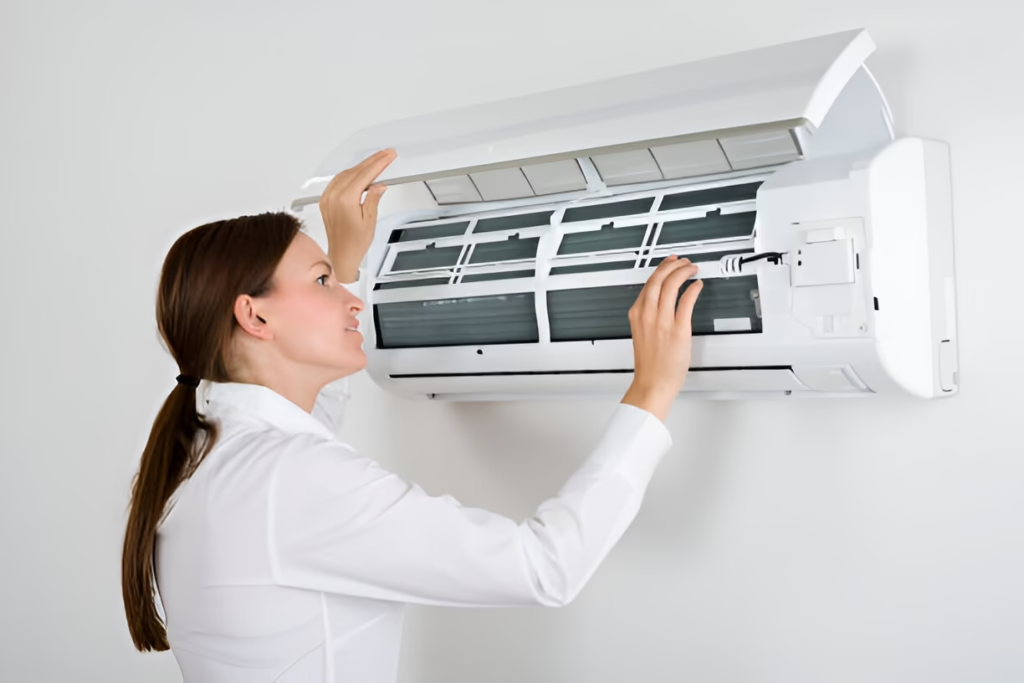
Best AC Temperature Settings for Energy Saving at Home By setting your air conditioner (AC) to the right temperature, you can save a lot of money on your energy bills and keep your home warm. Finding the best AC temperature for energy saving is more important than ever as the cost of power goes up and people become more aware of how their actions affect the environment. This piece talks about the best temperature settings for saving energy, using a study, expert opinion, and useful tips for U.S. homes. Why AC Temperature Matters Most of the energy that a home uses goes to its air units, especially in hot places. As per the U.S. Department of Energy, heating and cooling costs account for almost 48% of the typical household’s energy bill. Just a few degrees of change to your thermostat can save you a lot of money on your energy bills. What’s the best temperature for the AC to save energy? Let’s find out. Recommended Temperature Settings The Department of Energy’s Advice When you are awake and at home, the U.S. Department of Energy says to set your temperature to 78°F (25.5°C). This temperature strikes a good mix between being comfortable and using little energy. For extra savings, you can raise the temperature by 7–10°F while you’re away or asleep. Energy Saving Temperature Settings: When you’re home: 78°F (25.5°C) When you’re away: 85°F (29.4°C) When you’re sleeping: 82°F (27.7°C) By following this schedule, you can save up to 10% a year on cooling costs. Factors That Influence the Best AC Temperature 1. Humidity Levels If you live somewhere muggy, 78°F might feel too warm. To feel comfy, you might need to use a dehumidifier or turn down the temperature on your air conditioner. 2. Personal Comfort Every home is different. At 78°F, you’ll save the most energy, but some people may feel better at 75°F or 76°F. 3. Home Insulation Homes with good insulation keep cool air in longer, so you can keep the temperature higher without losing warmth. 4. AC Unit Efficiency AC units that are too old or not well taken care of may have trouble keeping the temperature stable, which can be uncomfortable and waste energy. 5. Ceiling Fans and Ventilation You can turn up the AC a few degrees without feeling a difference in comfort if you use ceiling fans to move the air around. How to Maintain Comfort While Saving Energy To save energy, you don’t have to give up comfort. To stay cool and save money, try these ideas: 1. Use a Programmable Thermostat You can set smart heaters to change the temperature at certain times of the day. As an example: Cool the house before you get home Set it higher while you’re at work. Lower it slightly at night. 2. Close Blinds and Curtains During the day, blocking sunlight lowers the amount of heat that comes in, which naturally keeps your home cooler. 3. Use Fans to Support Cooling Ceiling fans or portable fans can help move cool air around. They let you turn up the temperature by about 4°F without making the room feel warmer. 4. Seal Leaks and Insulate Close up doors and windows to keep cold air inside. Having good shielding makes your AC unit work less hard. Need Electrical Help? Your thermostat and air conditioning system should be properly set up and linked for the best performance. A domestic electrician can ensure safe and efficient wiring especially if you’re putting in ceiling fans or getting a smart thermostat. 5. Service Your AC Regularly Once a month, clean or change the filters, and at least once a year, have a professional do upkeep. Benefits of Setting the Right AC Temperature Energy Efficiency Keeping your air conditioner at the right temperature lowers the amount of electricity you use. Cost Savings Your energy bills will go down if you don’t run your AC as much. Smart choices can cut costs by at least 10%. Extended Equipment Life Your AC unit will last longer and need fewer fixes if it doesn’t get as much use. Environmental Impact Less energy use lowers greenhouse gas pollution, which is good for the environment. Common Mistakes to Avoid Setting the AC too low: Every degree below 78°F can make you use 6 to 8 percent more energy. Leaving thermostat unchanged: When you leave or go to bed, change the temperature. Ignoring maintenance: Low amounts of gas and dirty screens make the system less efficient. Not using fans: They’re a cheap way to stay cool without turning up the AC. U.S.-Specific Context and Laws Utility companies in many U.S. states will give you money back if you install a controlled thermostat. As an example: California gives people reasons to upgrade to smart heaters. Texas: Energy companies like TXU and Reliant advertise deals that save energy and let you control the temperature. Florida: Homeowners can get free energy tests and upgrades at no cost. Check with your local energy provider for specific programs. Comparing AC Temperature Settings by Room The best temperature for sitting rooms is 78°F, but other rooms may need a different temperature: Room Ideal Temp Setting Notes Living Room 76–78°F When occupied Bedroom 74–78°F Cooler at night for better sleep Kitchen 78–80°F May need ventilation due to cooking Home Office 76–78°F Balanced for comfort and focus Conclusion You don’t have to give up comfort to find the best AC setting for saving energy. The suggested temperature of 78°F is a good starting point, but your perfect temperature can change depending on things like humidity, insulation, and your comfort. You can keep your home cool and lower your energy bills by doing smart things like using fans, protecting your home, and keeping your AC system in good shape. FAQs What is the best AC temperature for energy saving in summer? When you’re at home, the best setting is 78°F (25.5°C). When you’re not there, turn it up to 85°F. Can lowering the AC